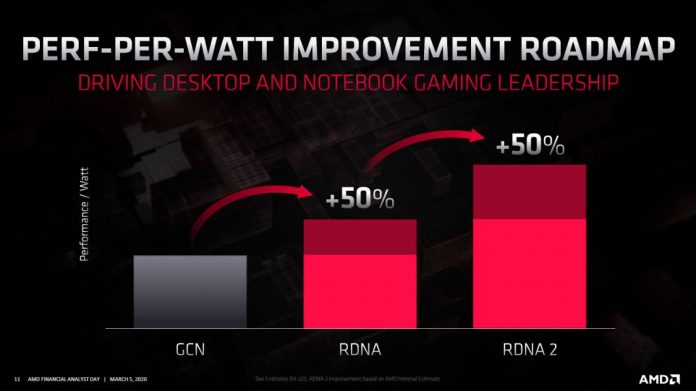AMD RDNA 2 GPUs: Release Date, Specs, Everything We Know
AMD’s rDNA two design and Navi 2x / Big Navi will power the succeeding generation consoles and high-end graphics cards.
AMD Big Navi, Navi 2x, RDNA 2. no matter you wish to call them, AMD’s next-generation GPUs are promising huge performance and potency upgrades, along with feature similarity with Nvidia in terms of ray tracking support. Here’s everything we know about Big Navi, including the RDNA 2 design, potential performance, expected announcement date and pricing.
The RDNA 2 Architecture in Big Navi
Every generation of GPUs is constructed from a core design architecture, and each design offers enhancements over the previous generation. It’s an iterative and additive method that never really ends. AMD’s GCN structure went from the first generation for its HD 7000 cards in 2012 up through fifth-gen within the Vega and Radeon VII cards in 2017-2019. The RDNA design that powers the RX 5000 series of AMD GPUs arrived in mid-2019, conveyance major enhancements to competence and overall performance. RDNA 2 seems to double down on those enhancements in late 2020.
Perhaps the most noteworthy update is that the wavefronts — the core unit of labour that gets accomplished — have been transformed from being sixty-four threads wide with four SIMD16 execution units to being thirty-two threads wide with one SIMD32 execution unit. SIMD stands for Single Instruction, Multiple Data; it is a vector processing component that optimizes workloads where the equivalent instruction must be run on giant chunks of data, which is common in graphics workloads.
This matching of the wavefront size to the SIMD size helps improve performance.
The one feature we are sure enough is that RDNA 2 / Big Navi / Navi 2x GPUs will all support hardware ray tracing. That will bring AMD up to feature similarity with Nvidia. Note that Nvidia also has Tensor cores in its Turing design, which are used for deep learning and AI computations, as well as DLSS (Deep Learning Super Sampling), which has currently been generalized with DLSS 2.0 to boost performance and image quality and build it easier for games to implement DLSS. So far, AMD has said nothing concerning RDNA 2 / Navi 2x including Tensor cores or an equivalent to DLSS, though AMD’s CAS (Contrast Aware Sharpening) and RIS (Radeon Image Sharpening) do overlap with DLSS in some ways.
We also understand that AMD is planning various Navi 2x products, and we anticipate to see extreme, high-end and mainstream variants though budget Navi 2x appears unlikely, given RX 5500 XT launched this year. AMD may launch multiple GPUs in a comparatively short period, but more likely we’ll see the most powerful performance variants first, followed by high-end and eventually mid-range solutions. Some of those may not happen until 2021, however.
Potential Big Navi / Navi 2x Specifications
We know a few things. First, AMD is completely capable of making an RDNA 2 / Big Navi GPU with a minimum of 52 CUs, and very likely can go higher. AMD is also working on two completely different GPU arrangements for the Xbox Series X and PlayStation 5, though that doesn’t mean either configuration will end up in a computer graphics card. Sony’s Mark Cerny was swift to point out that there’s some unrevealed ‘special sauce’ in the PS5 processor, for example. The future consoles give us a minimum baseline for what AMD can do with Big Navi.
AMD features a heap of choices available.. The PC Navi 2x GPUs are going to be diverse from what the consoles are adopting because they’ll be focused solely on graphics — there’s not going to be any Zen 2 CPU chipset, for instance. there is an equalisation act between chip size, clock speed and power, and each processor can prioritize things differently. Larger chips use more resources and cost more to manufacture, and they typically run at lower clock rates to compensate. Smaller chips have higher yields, cost less and use less power, but for GPUs, there’s a lot of base practicality that has to be present, so a chip that’s half the performance usually isn’t half the volume.
Looking at Navi 10 and RDNA 1, it isn’t a time to imagine AMD shoving twice the quantity of GPU cores into a Navi 2x GPU. Navi 10 is comparatively small at just 251mm square, and AMD has adopted much larger die sizes in the past. Anyway, let’s cut to the hunt. There are loads of talks floating about, and as eternally we suggest taking these with a healthy dose of sarcasm. The truth is that AMD can and expected will alter CU and core numbers as it gets nearer to launch. The Navi GPU configurations are complete and we’ve noticed a few early demonstrations of operating hardware, but that doesn’t indicate final specs are known not by AMD, and surely not by any leakers. A GPU’s maximum CU count can’t be surpassed, but disabling parts of each GPU is conventional practice and has been for years.
We think it’s doubtful AMD will go higher than these estimates. Lower is more plausible, and nothing is certain yet.














